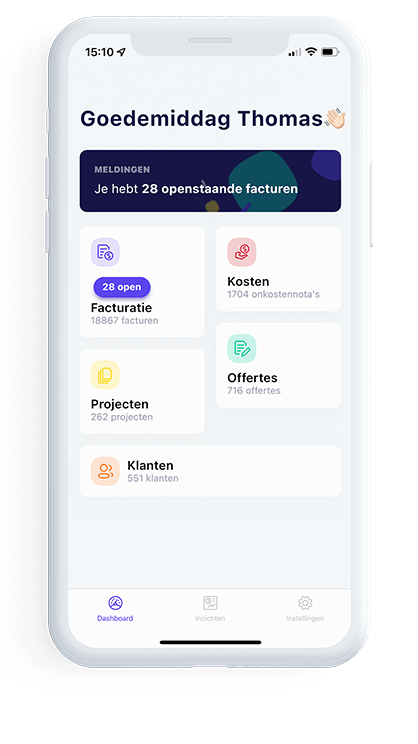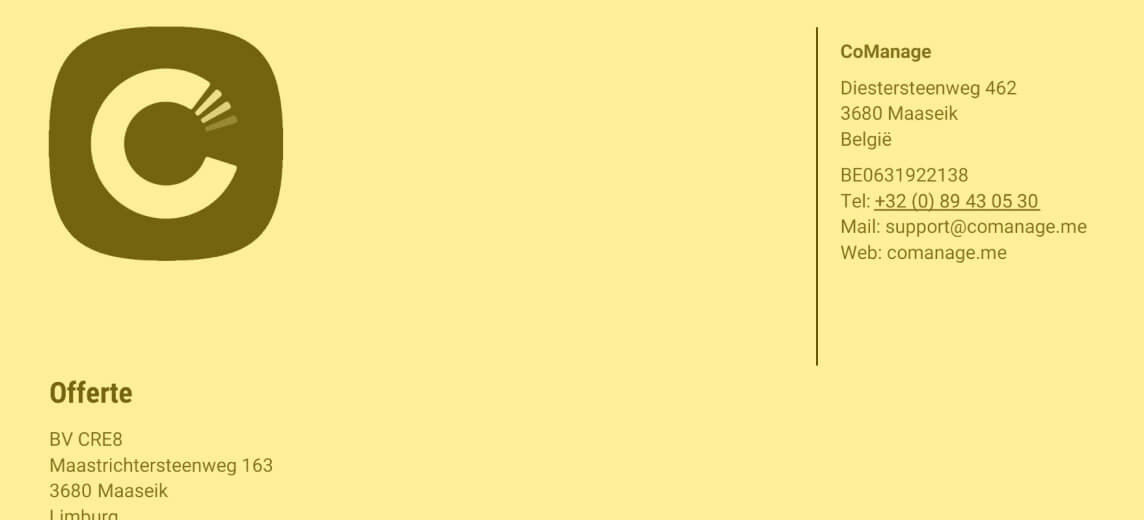
Quote Example - What does a quote consist of? (9 elements)
The sample quotation - which you can download a bit further - contains 9 elements. Unlike invoices, there are no real legal prescriptions for quotations.
But if you want to make a professional impression, you should not forget or omit these 9 parts.
The 9 most important elements of every quotation:
1. Your company details
2. Your company logo
3. Customer data
4. Quotation date
5. Quotation number
6. Expiration date
7. Detailed description of services / products
8. Pricing
9. Terms and conditions
The goal of quotations is to expand your wallet and your business.
All of the above elements contribute to your unambiguous offer. Or in other words: they prevent misunderstandings and misery. The best you can do, is include everything in your quotes too. Just like we did in the sample offer.
If you create a quotation as a response to an RFQ, you can best double check if you need to include other information too.
# 1 Your company details on your quote
Potential customers usually request quotes from several possible suppliers. Make sure your company data is mentioned on your offers is therefore an absolute must . After all, you want to make sure the customer knows who sent the most appealing offer.
It is of vital importance that your company details are complete and correct:
your full company name, including your legal entity type (Ltd. NGO, Inc.,...)
your VAT number
full address of your registered office or branch
contact details (telephone, e-mail, ...)
contact person
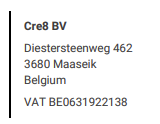
There are two advantages of making sure you include all your (correct) data on your quotations:
You make a professional impression. Depending on the quotation software you use, that can be very easy or difficult.
You can use your quote as a legally valid order form.
If you want to, you can combine your quotations and contract / official order form into one document. All you need is a signature of your customer.
Pro tip : In CoManage you only need to enter your company details once. This info is automatically put on on all the quotations you create and send.
# 2 Your company logo on your quote
Your logo visually distinguishes your company from your competitors. Customers who have seen your logo before, will recognise your brand easier the next time.
Now, here is a little secret. Trust comes with recognition, a feeling of familiarity.
By simply putting your logo on your offers, you make it easier for leads and customers to choose your (trusted) brand.
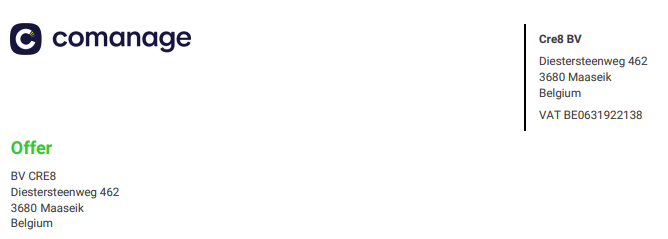
From a legal point, you do not HAVE TO display your logo on your quotations. But if you do have a logo but don’t show it in your quotations... Well that would be strange.
Pro tip : In CoManage you can upload your logo. Resize and position it and you are ready to start sending offers at lightning speed.
# 3 Put your customers’ data on your quotes
Quotations are personal. Each offer you make is tailored to the needs of a specific customer with particular needs. Or it should at least give this impression.
Make your customers and leads aware of the effort you put into their requests.
By mentioning your customer's data explicitly on your quotation, you make a strong statement:
My offer is exclusively for you.
If your lead, or customer has a VAT number, include it too. Here is why:
If you know the VAT number of a lead before you actually start a business relationship, you will save time afterwards. Malicious leads tend to ignore to send you this kind of information once you have fulfilled your part of the deal. Also, you legally have to mention the other party’s VAT number on your invoice. If you do not have this obligatory information at hand, you will have to postpone issuing your invoice . And as an unpleasant result, you will have to wait longer for your payment.
If you know the VAT number in advance, you can screen the company before you start doing business. This way, you can prevent closing a deal with a company that is on the brink of bankruptcy.
Pro tip : In CoManage, you can enter, or upload your customer's details once. From that moment on, you can easily find and put the correct information on your quotations. You also no longer have to type or copy/paste data from an outdated document.
# 4 Quotation date
The quotation date is important for administrative reasons . It helps both you and your customer to find a particular quote faster.

Some customers keep on negotiating. In the end, you may have 5 different versions of an offer for the same customer and project. Of course, you want to make sure you are using the right approved quotation as a basis for your work. A date may come in handy for these cases.
Leaving out a quotation date can and will lead to confusion. And sometimes to abuse.
Also for your marketing and sales team, it is important to keep track of dates.
Based on the approval rate of your quotations, you will get useful insights into:
the success of your campaigns
effectiveness of your sales representatives
popularity of services / products
Pro tip : CoManage automatically fills in the date on your offers. Do you want to change that date? That is also possible.
# 5 Quotation number
This part is less necessary than the other 8 elements of your quotes.
Make sure it is on your offer when...
You send customers more than one quotation on the same day
You have different teams who are responsible for sales, administration, execution,...
The advantage of a reference on your quotation, such as a number? It is easier to find the correct quote later on.
If you send few offers, this element is less useful. Also, your customers may have doubts if you send quote number 3 in July. Is this really only your third quote of this year? What is wrong with your business?
Pro tip : In CoManage you can choose between automatic numbering of your offers, or disable this option and hide the reference number.
# 6 Always mention your expiration date
You absolutely HAVE TO mention an expiry date on your offers.
Prices change. Life becomes more expensive. Your offers are not meant for eternity.
It would be absolutely bad for your business if a customer agreed with a quote you sent a couple of years ago.
But an expiry date is useful for another reason too: pressure. Your offer is limited in time. Take it now, or pay more later on. You do not have to mention this explicitly.
Customers usually get the idea. And some of them will decide quicker, just because the offer is limited in time.
The advantage for you?
Less work with following up quotes that have not been approved
A bit of pressure can boost your sale
That gives you a perfect ‘excuse’ to follow-up quotations
To increase the success rate a bit more, make sure that your expiry date is not too far away in the future. For quotations that are valid for 6 months, there is not a real “now or never" effect.

On the other hand, an expiry date six months from now, can also have a positive effect.
In that case, your customer will have some breathing space and time to reflect. For bigger projects, this is the preferred way. Reassuring your lead or customer that prices are fixed for a longer period, may convince them to opt for you.
Pro tip : CoManage automatically fills in the expiration date on your quotations based on a one-time setting. If you want to use a longer or shorter period for certain offers, you can easily change this manually.
# 7 Detailed description of services or products
On the quotation example, you can see a clear description of the services that will be delivered after approval.
In addition to a general description, it is best to give as much details as possible.
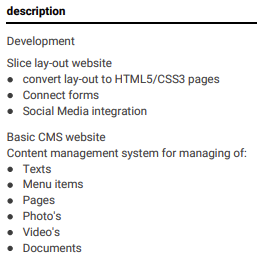
This way you give the customer a clear idea of the costs of every single part, product, or task.
With details, you also give customers a choice to leave out certain options, or products. If you give one total price and no further details, you present it as a take it or leave it offer.
It all depends on you and the expectations of your customer.
Pro tip : In CoManage, you can easily adjust your quotes based on the feedback of your customer. With just a few clicks, you can add, remove or edit your pricing and products or services to better meet the customer’s expectations.
# 8 Prices, (sub)totals, discounts
Prices are undoubtedly one of the most important parts of your quotes. Oftentimes your prices are the main factor in the decision process. You. Or your cheaper competitor who offers exactly the same.
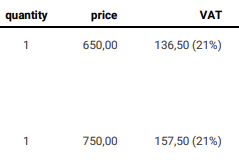
It is vital to mention whether VAT is included or not . It is common practise to:
list the VAT amount in a B2C quotation
list prices exclusive of VAT in a B2B quotation
If you want to prevent any misunderstandings, mention it twice. Or three times.
Does your offer include free extra services or goods? Like for instance a warranty period, free shipping, or free installation.
Make sure to include that in your quote and mention the price explicitly.
0 €
0 $
Extra and free. Everyone loves it.
It is also possible to give a discount. Just fill in the amount or percentage you want to give your customer and let a tool do the math for you.
Pro tip : CoManage takes care of VAT calculations. If you are using different tax rates , you can set the VAT rate per product or service separately
# 9 Terms and conditions
The least you should do is include a hyperlink in your quote to the online version of your Terms and Conditions.
The far better option is to include the full version of your Terms in your quote.
Doing so comes with some advantages:
Changes in the online version of your Terms & Conditions, may affect your offer. This can be in your (dis)advantage. You can easily prevent this kind of misunderstandings by including the legally binding Terms explicitly on your quotes. Your customer has a copy and so do you. There will never be any doubt or discussion about which conditions were applicable at the time of the approval of your offer.
Implicitly, you also show that doing business with your company is clear and straightforward. You cannot tell whether your customer actually read your conditions, but having mentioned your rules in the very beginning, puts you in a stronger position afterwards.
Pro tip : In CoManage you can enter / adjust your general conditions on your quotations and then have them automatically added to all your offers (and invoices).
Conclusion: what to do with the quotation example?
The example quote is just ... an example. You are not obliged to mention all of the above elements on your offers.
But on the other hand, the dummy quotation contains all the elements that establish trust and prevent misunderstandings.
Both are important in any business relationship that aims for success.
